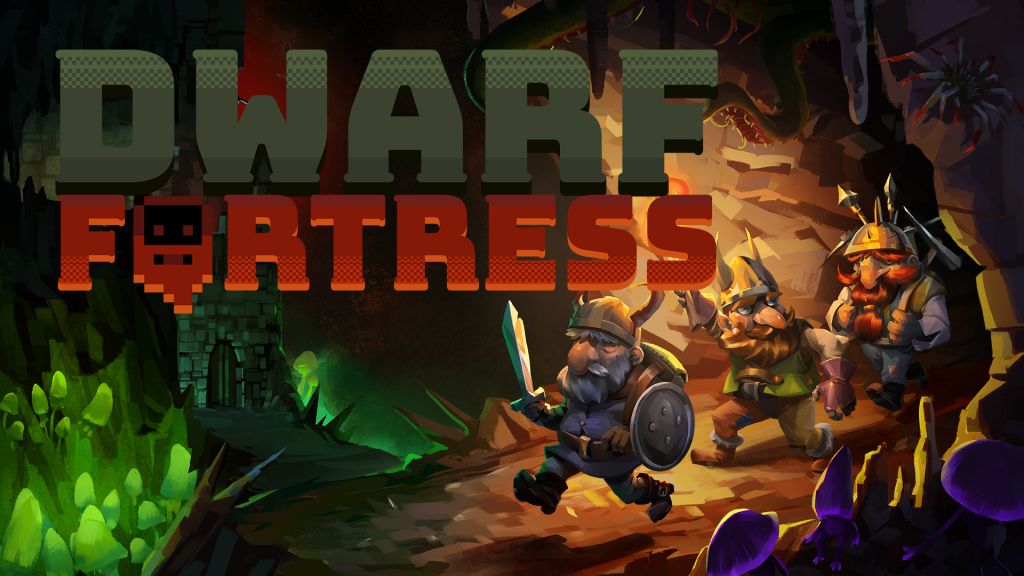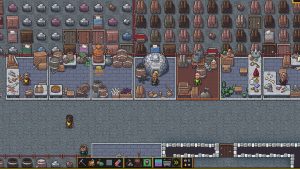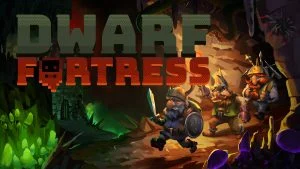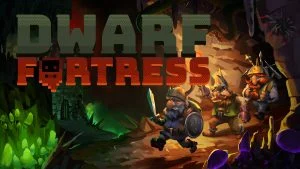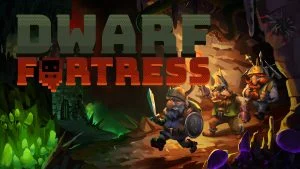Dwarf Fortress, developed by Bay 12 Games and published by Kitfox Games, is a complex settlement management, fortress-builder, and dungeon-crawling experience whose essence lies in the procedurally-generated lore that the game creates for every living creature on the map.
Complex, enigmatic, and just plain fun, Dwarf Fortress is one of those games you think about whenever you’re not playing it.
Today’s modern video games have a lot of things. Fancy graphics, complex gameplay mechanics, deep storytelling & voice acting–the list goes on. So how did a game with ASCII graphics and limited animations become so popular? How did a game created by just two brothers, Tarn and Zach Adams, capture the minds and hearts of so many people for the past 16 years?
The simple answer? It’s really addictive.
The Depth of a Mineshaft
Every time that you think you’ve reached the end game in Dwarf Fortress, you’re probably wrong. When I say the game has layers, I mean it. At first–if I’m being honest, I didn’t understand all the hype.
The concept of every living creature having 12 different tabs filled with health information, desires, wants, dreams, and personalities is intriguing. Still, when packaged with a pretty rudimentary UI, limited animations, and simple pixel graphics–it can be hard to get into at first.
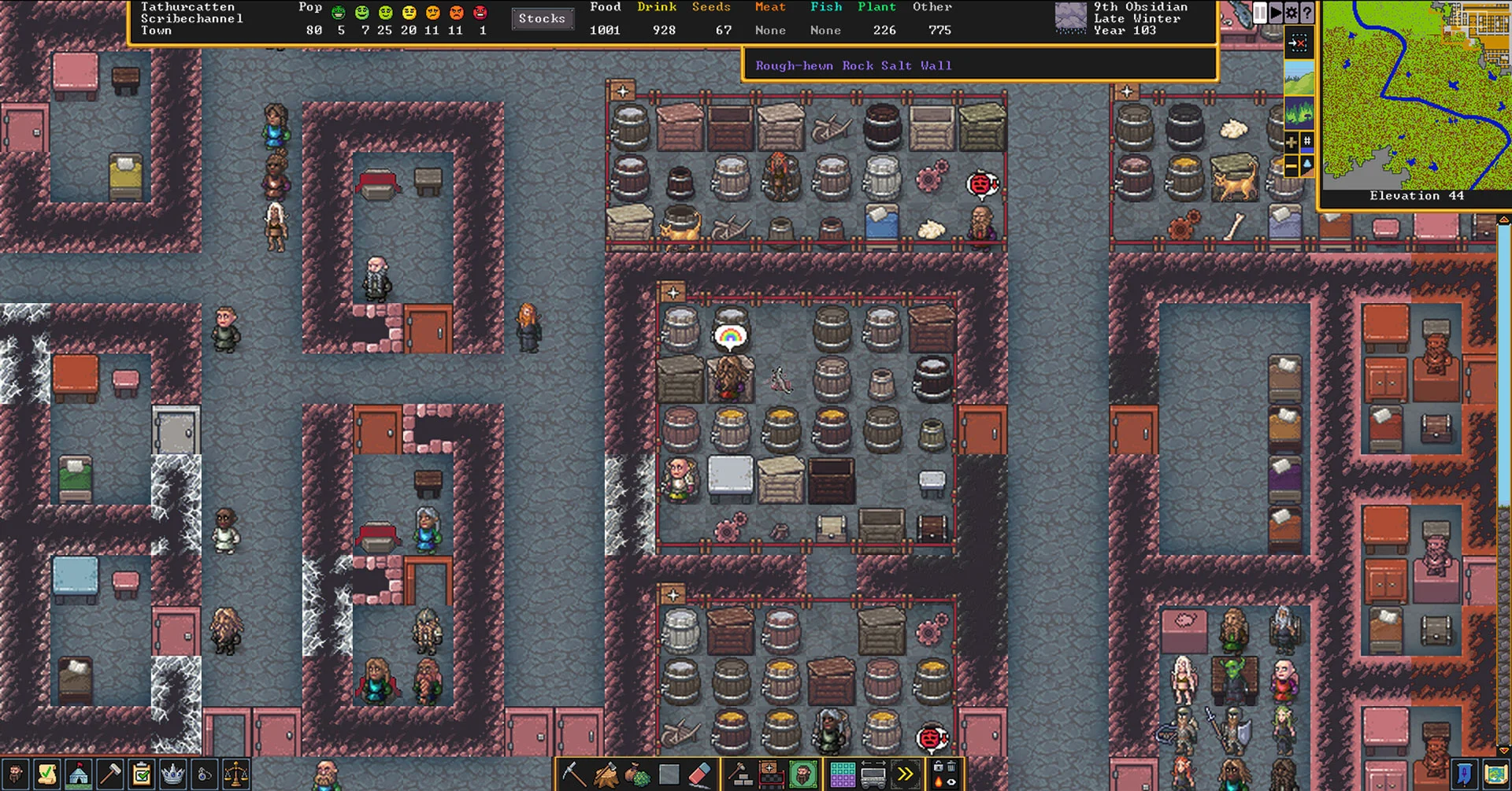
Once all my production Workshops had been built and I figured out how to sustain a healthy supply of food, drink, and personalized bedrooms, I thought I had seen it all.
But I was wrong. That’s just the surface of what you will get if you commit yourself to truly understanding the gameplay in Dwarf Fortress. Outside your tiny citadel lies a world filled with opposing kingdoms, dangers, gods, and so much more.
The longer you play, the more you’ll uncover; things you didn’t think were even in the game will impact your Dwarven society. A goblin looking to kidnap children? It has that. How about a 140-year-old Fisherdwarf depressed over the loss of a loved one? Yep, it has that too.
Every time you think you’ve done or seen it all or reached the “end game,” it just continues, surprising you at every corner. Opening up new potential as 30 new Dwarves join your society. You’ll have a lot of epiphanies and revelations while playing this game.
“Oh, that’s how that works,” or, “Awesome–I didn’t know it could do that,” are lines you’ll probably find yourself saying a lot. After playing the game for nearly 70 hours, I feel like I’m still just scratching the surface of what it has to offer.
You’ll Care About Your Dwarves
The strange thing about this whole thing is that you’ll eventually become more invested and interested in your Dwarves, even as they grow in number. Those OG Dwarves that were with you since the original caravan? You’d better hook them up with upgraded royal accommodations.
When a catastrophe happens, like a tree falling on one of your Dwarves’ heads, you’ll feel a sense of loss. Even if you don’t witness it and just come across their remains, you’ll want to look back and see exactly what happened to them.
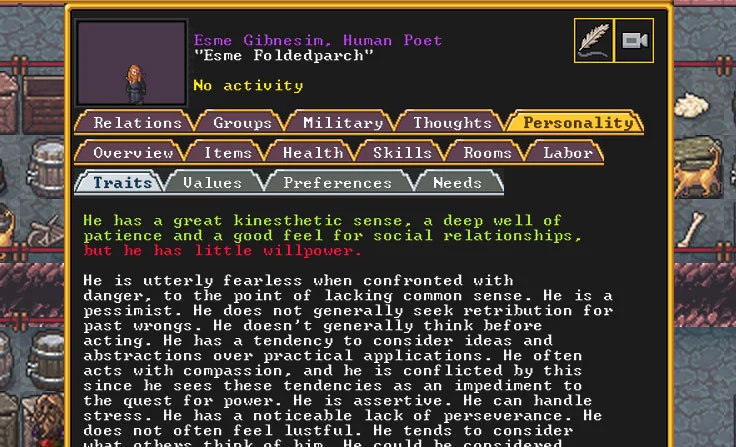
At first, I forgot I was dealing with Dwarves until my 140-year-old Fisherdwarf started to complain he wasn’t being “creative enough.” You’ll live a long time with these little guys, and their unique personalities will start to grow on you, especially if you find yourself reading the character info tab a lot.
A Randomly Generated Pick-Your-Own-Story
The best way I can describe Dwarf Fortress is that it’s like those old Goosebumps novels that used to let you pick your story path. Sure, the computer and world randomly generate certain events, but ultimately it’s up to the player to overcome or succumb to those events. And that will largely come down to how you’ve managed your people and Fortress and the conscious and unconscious decisions you make in your playthrough.
In the same way as one of those books, a lot of the lore and story you’ll uncover in the game comes via text logs. These logs get incredibly intense and detailed, with battle logs telling you what vein or artery your Dwarf hit when they savaged that Goblin (my favorite was “Dog bites down on head and doesn’t let go,” ouch).

And in other ways, making the wrong decision during that key moment can sometimes spell doom for your save file. While sometimes that feels unfair–especially in cases where you can’t control the external factors that destroy your Fortress–it’s also part of the fun. Again, like those R.L. Stine books, sometimes you choose the wrong path, and your novel is two pages long.
Room for Development
I’ll probably catch some hate mail for this, but there is room for development in Dwarf Fortress. How is this possible in a game that’s been 16 years in the making? Well, I’m specifically talking about the Steam version here.
The divergent paths, randomly-generated aspects, and all the different variables in the game make each playthrough incredibly exciting and new–but the Steam Version, upon launch, still has some “bugs” and clunkier elements of play. UI enhancements/adjustments could make the game more approachable and palatable to newer players.
For example, if you end up playing the game, at least at the time of writing, don’t buy or craft backpacks. There’s a current bug in the game that causes your Dwarves to hold onto food in backpacks until it rots, then you have a rotting pile of filth sitting in your Fortress that you can’t remove. And while I have to be careful because you never know, and some “bugs” might be users misunderstanding things, I think I’d be remiss if I left those criticisms out of the review.
I know the developers plan on working on the game and fine-tuning it, so there is room for improvement and fixes in certain areas. And while the game has been constantly referred to as “incredibly complex,” in some places, it doesn’t have to be if the UI could be tweaked just a bit.
Final Conclusion
Dwarf Fortress is a highly addictive settlement-building game that draws you in with its randomly generated lore and the cavernously deep paths the game can take you on. While a bit rough around the edges, it’s also a part of what makes the game so great.
If you aren’t about complexity in your games and dislike city-builders or settlement management simulations, then the barrier to entry for Dwarf Fortress may be a mountain too steep to climb. However, if you can use your imagination, like being able to do virtually anything you want to do, and love building and customizing every aspect of your own world and society, then Dwarf Fortress is one of the best games released in 2022.
Dwarf Fortress Review (Steam Edition)
Excellent
Dwarf Fortress is a highly-addictive settlement-management game whose strengths lie in procedurally-generated worlds, rich story building, and divergent, randomized paths players can take. Highly complex, Dwarf Fortress will make you more obsessed with it the longer you play it.
You can purchase Dwarf Fortress on Steam.
See our Review Policy Here.
[Reviewed on PC]

